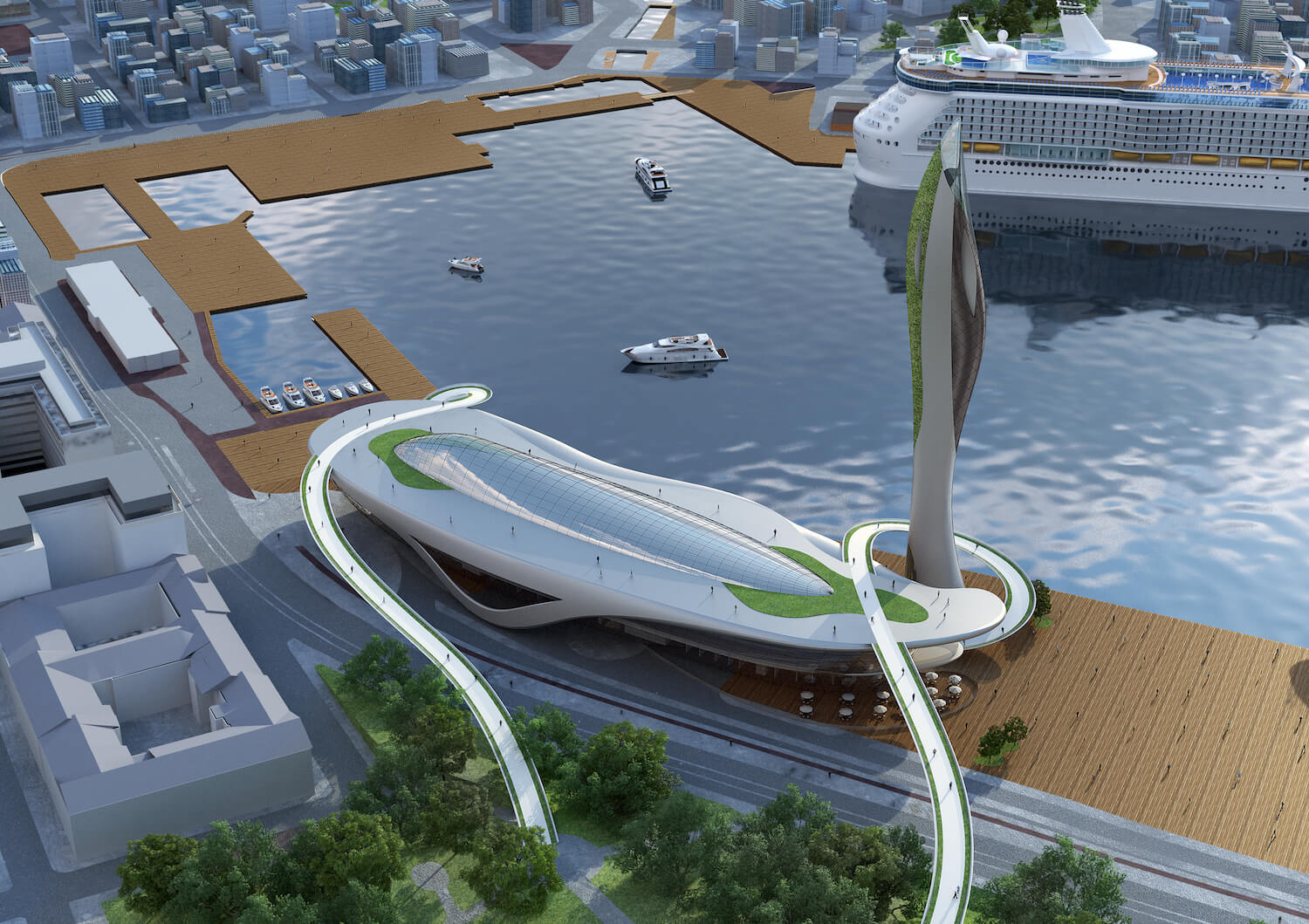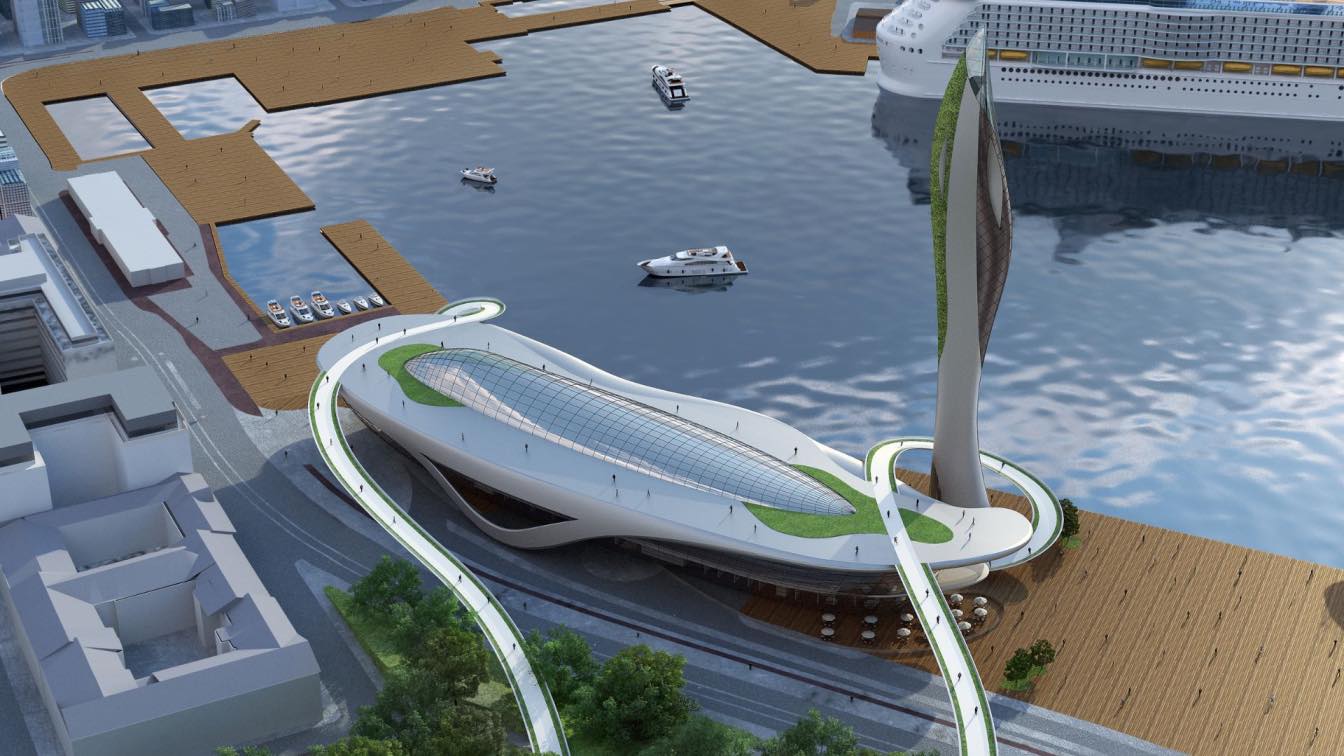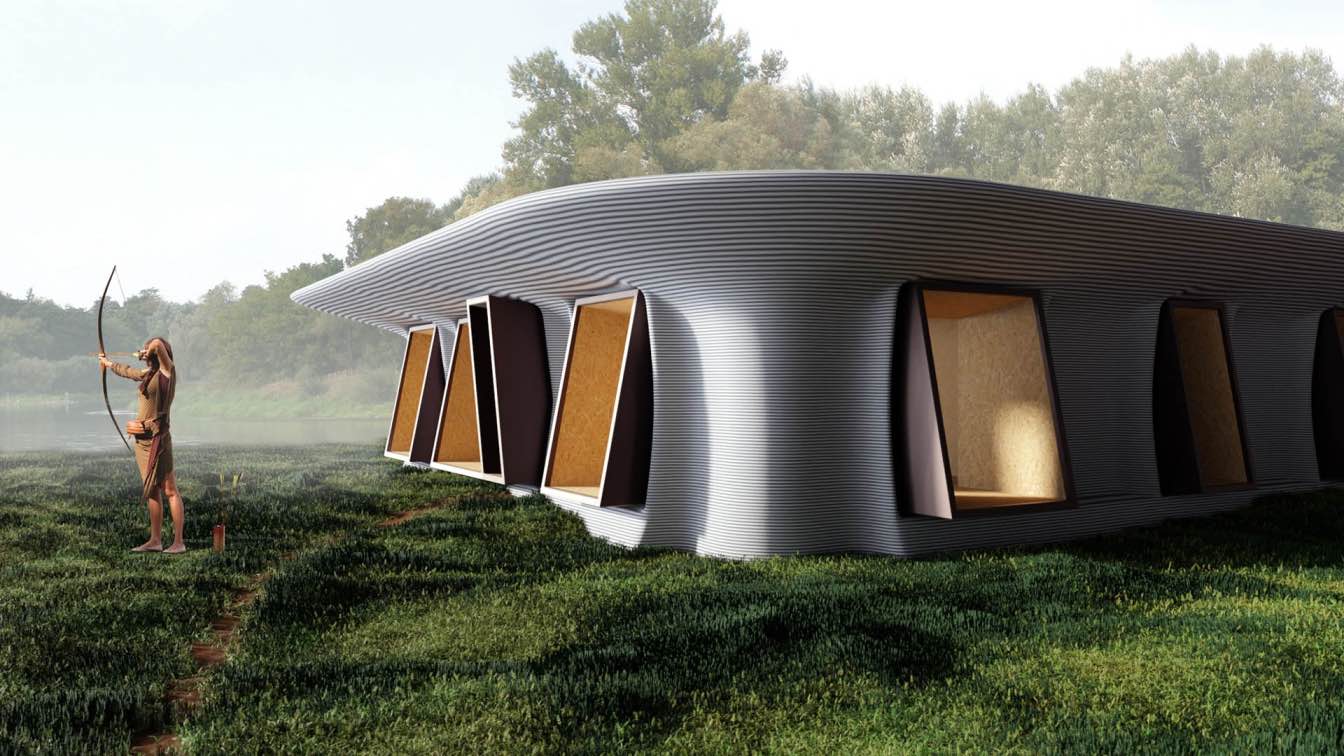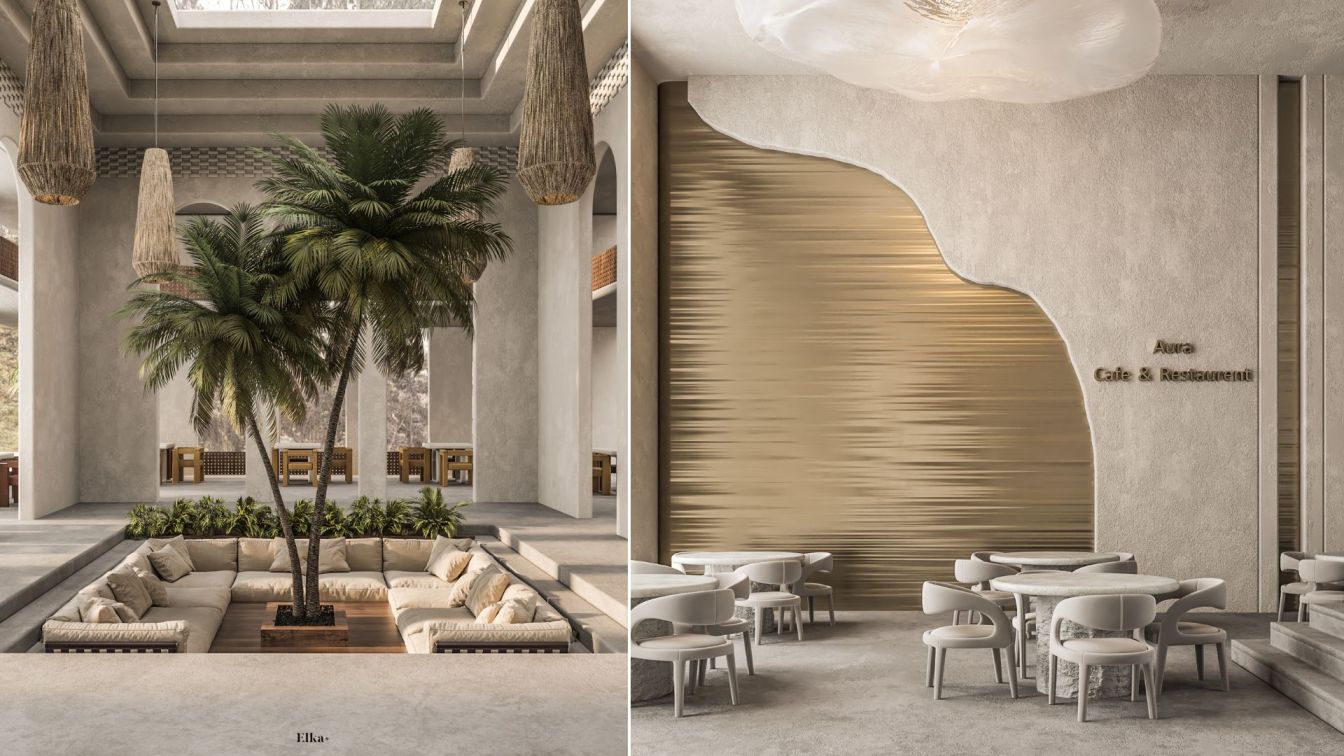Realiza Arquitetura: The shapes of this project symbolize the human being's attempt to reach the splendor of nature's solutions. In this transitional stage, the building becomes a large plant that treats air and water, generates energy and, more than supplying its private demand, democratizes the results with a positive generation for the city. Furthermore, it amicably points to the future in which materials and technologies will be truly natural, alive, and integrated with nature.
As a proposal to the Guggenheim Museum, we present the Regenerative Architecture.
Besides meeting technical, aesthetical and functional demands, the regenerative building is designed to become a spatial icon, prototype of the architecture of the future.
The horizontal main building provides great space experiences and the vertical annex deals with the environmental, energetic and economic autonomy, of the museum building and by the regenerative capacity by giving back the positive excesses of potable water, energy, unpolluted air and recycling materials to the Helsinki community. It takes a vertical shape that multiplies the potential from the sun and winds.
The iconic vertical element allows the creation of a belvedere-like exposition gallery where the work of art is Helsinki itself and is an urban reference capable of symbolizing a bond between the main urban landmarks. At night, it becomes a true lighthouse of knowledge.

There are connections with surrounding parks, buildings and harbor through walkways, design, landscaping, visual communication and openings in the museum building, allowing both visual and spatial integration. Two walkways from the Tahtitorning Park connect it to a big plaza on the museum rooftop, around a big glass dome where people can see the inside of the museum. The path through the walkways allows the panoramic views of the city and the organic shape of the museum can be enjoyed. These walkways carry on to the deck plaza of the belvedere and to the welcoming plaza of the main access of the museum. This plaza welcomes a large number of pedestrians and cyclists through public equipment and bike racks. VIP vehicles and the handicapped are led to a wide port cochere, whereas employees and service vehicles have their own parking lot and docks.
The Etelaranta Laivasillankatu street is revitalized with the implementation of a boulevard that leads to the welcoming plaza of the Museum and connects the parks Tahititoinin, Esplanadi and the Uspenski Cathedral. Throughout this street, the sidewalk and bike paths have their dimensions expanded and a large deck connects all the harbor activities.
Idealized from high tech and sustainable materials, the museum has technical walkways, shafts and cabling grid. The LED façades allows image projections (media facades) and the local wood is used on the floor, walls, stairs and lining of the internal spaces.

Sustainable strategies are resumed in:
Energy: Minimizing energy consumption with:
Heat pumps which make use of the bay water as heating source.
Open loop and wetlands systems to filter the water and return it to the bay.
Evacuated tubes to heat water used for domestic use and space heating.
Radiant system with chilled beans.
Production of renewable energy.
Photovoltaic panels.
Photocells on the glass roof work as solar control elements.
Water: Belvedere is a water "purifier" that contains:
Use and store of rain and melted snow water.
Use of seawater as greywater and later, treated and returned to the ecosystem.
Air: Plants from the green facade and wetland purify the air.




























